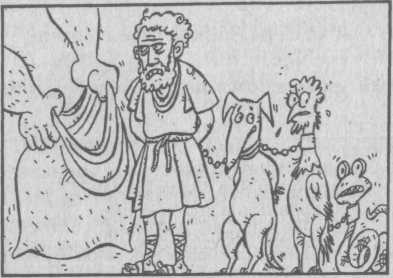Just_English_2 часть. Just English. Английский для юристов 43
 Скачать 1.96 Mb. Скачать 1.96 Mb.
|
Just English. Английский для юристов 43   Reproduce the contexts in which they were used. Make up your own sentences with these words. Reproduce the contexts in which they were used. Make up your own sentences with these words.TASK 5. Answer the following questions:
TASK 6. Render the following passage into English paying special attention to the words and expressions in bold type: Преступность и ее причины Преступность и ее причины могут быть изучены на индивидуальном, групповом и социальном уровнях. Им, следовательно, могут быть даны психологическое, социологическое и философское объяснения. Эти объяснения не противоречат друг другу, а дополняют одно другое, позволяя проанализировать причины преступности с различных сторон. Рассматривая эту проблему на индивидуальном уровне, можно обозначить причины преступности как конфликт поведения человека с социальной средой. Когда человек попадает в проблемную ситуацию, он часто не находит решения возникших сложностей и выбирает преступный путь. Но возникает естественный вопрос: а почему личность формируется таким образом? И почему возникают проблемные ситуации, ставящие человека перед трудным выбором? Ответить на эти вопросы невозможно, если не обратиться к изучению современного общества. При этом очевидно, что в качестве причин преступности выступают и социально-экономические, и политические, и духовные факторы, тесно связанные друг с другом. Обстоятельствами, ведущими к преступному поведению, считаются: антиобщественное поведение родителей; алкоголизм и нервно-психические заболевания родителей; низкий уровень культуры в семье. Негативными особенностями личности и поведения считаются: прежняя судимость; совершение иных противоправных поступков; негативное отношение к нравственным ценностям; злобность, грубость и мстительность; пьянство, употребление наркотиков, азартные игры. Итак, после того, как мы узнали о криминологии достаточно многое, нетрудно заключить, что преступность может возникнуть на основе взаимодействия личности и социальной среды. DEBATE All criminals are perverse people! Prepare your arguments for or against the statement above. Use the active vocabulary from the Unit. Divide into two groups — pro and con, and conduct a debate. Appoint the 'Chair' of the debate who will give the floor to the speakers of both teams. UNIT 4. PUNISHMENT BRAINSTORM In your opinion, what does 'punishment' mean? What kinds of punishment do you know? TASK 1. Read the text and write down Russian equivalents for the words in bold type: Punishment describes the imposition by some authority of a deprivation — usually painful — on a person who has violated a law, a rule, or other norm. When the violation is of the criminal law of society there is a formal process of accusation and proof followed by imposition of a sentence by a designated official, 44 Just English. Английский для юристов Chapter II. Crime and Punishment 45   usually a judge. Informally, any organised group — most typically the family, may punish perceived wrongdoers. usually a judge. Informally, any organised group — most typically the family, may punish perceived wrongdoers. Because punishment is both painful and guilt producing, its application calls for a justification. In Western culture, four basic justifications have been given: retribution, deterrence, rehabilitation, and incapacitation. Most penal historians note a gradual trend over the last centuries toward more lenient sentences in Western countries. Capital and corporal punishment, widespread in the early 19th century, are seldom invoked by contemporary society. Indeed, in the United States corporal punishment as such appears to be contrary to the 8th Amendment's restrictions on cruel and unusual punishment. Yet the rate of imprisonment in the United States appears to be growing. Furthermore, since the mid-1970s, popular and professional sentiment has taken a distinctly punitive turn and now tends to see retribution and incapacitation — rather than rehabilitation — as the goals of criminal punishment. Criminal sentences ordinarily embrace four basic modes of punishment. In descending order of severity these are: incarceration, community supervision, fine, and restitution. The death penalty is now possible only for certain types of atrocious murders and treason. Punishment is an ancient practice whose presence in modern cultures may appear to be out of place because it purposefully inflicts pain. In the minds of most people, however, it continues to find justification. TASK 2. Explain the meaning of the following words and expressions: justification rehabilitation restitution retribution sentence authority, authorities community supervision deterrence fine incapacitation incarceration TASK 3. The word PUNITIVE has the following meanings in Russian: 1) связанный с применением наказания punitive article — статья, устанавливающая уголовную санкцию 2) карательный; штрафной punitive action — карательная мера, карательная акция Match the following English expressions with their Russian equivalents:
TASK 4. Point out the main ideas of the text in Task 1. Make a list of them. TASK 5. Work in teams and write down false statements based on the text in Task 1 (no fewer than 6 statements). Present them in class. Use the information from the text in Task 1 to refute the other team's false statements. TASK 6. Complete the following text with the words and expressions from the box: From the History of Punishment f  elons; offender; beheading; adultery; pillory; punishment; execution; deliberately; condemned; ancient; medieval; guilty; legal; public elons; offender; beheading; adultery; pillory; punishment; execution; deliberately; condemned; ancient; medieval; guilty; legal; publicFor the most history h  as been both painful and as been both painful andin order to act as deterrent to others. Physical punishments and public humiliations were social events and carried out in most accessible parts of towns, often on market days when the greater part of the population were present. Justice had to be seen to be done. One of the most bizarre methods of was inflicted in ancient Rome on people found of murdering their fathers. 46 Just English. Английский для юристов Chapter II. Crime and Punishment 47     Their punishment was to be put in a sack with a rooster, a viper, and a dog, then drowned along with the three animals. In Greece the custom of allowing a man to end his own life by poison was extended only to full citizens. The philosopher Socrates died in this way. Condemned slaves were beaten to death instead. Stoning was the ancient method of punishment for among other crimes. In Turkey if a butcher was found guilty of selling bad meat, he was tied to a post with a piece of stinking meat fixed under his nose, or a baker having sold short weight bread could be nailed to his door by his ear. One of the most common punishments for petty offences was the, which stood in the main square of towns. The was locked by hands and head into the device and made to stand sometimes for days, while crowds jeered and pelted the offender with rotten vegetables or worse. In Europe some methods of execution were drawn out to inflict maximum suffering.were tied to a heavy wheel and rolled around the streets until they were crushed to death. Others were strangled, very slowly. One of the most terrible punishments was hanging and quartering. The victim was hanged, beheaded and the body cut into four pieces. It remained a method of punishment in Britain until 1814. was normally reserved for those of high rank. In England a block and axe was the common method but this was different from France and Germany where the victim kneeled and the head was taken off with a swing of the sword. TASK 7. Answer the following questions:
It's Interesting to Know Joseph Ignace Guillotin A doctor and member of the French Legislative Assembly, he suggested the use of the guillotine for executions in 1789. A physician and humanitarian, Guillotine was disturbed by vulgarity of public executions and petitioned for a single method of capital punishment to be used for all crimes demanding the death sentence. The guillotine consists of a heavy blade with a diagonal edge, which falls between two upright posts to cut off the victim's head cleanly and quickly. Similar machines had been used in various other countries including Scotland and Italy. The main idea was to make execution as quick and painless as possible. The first person executed by guillotine was the highwayman Pelletier in 1792, but the machine came into its own in 1793, during the Reign of Terror following the French Revolution, when aristocrats were guillotined by the hundred. The device was nicknamed 'Madame Guillotine' after its sponsor. Charles Lynch Captain Charles Lynch, of Virginia, author of the infamous lynch law, will forever be linked with 'vigilante justice'. Lynch decided that he and his neighbours were too far from lawmakers and sheriffs to punish properly the vandals and robbers terrorizing the rural area. He encouraged the fellow citizens to sign a declaration he drafted, announcing the intention to 'take matters in their own hands'. "If they (criminals) do not desist from their evil practices, we will inflict such corporal punishment on them, as to us shall seem adequate to the crime committed or the damage sustained." Although the death penalty was not always exacted, in most cases the punishment turned out to be hanging. In addition to the fact that many innocent victims suffered lynching, a certain amount of guilt among the lynchers can be ascertained by the very technique for hanging criminals. Lynch and his cohorts practiced a form of passive hanging. A rope was tied around a tree and the condemned man placed on a horse with the other side of the rope strung snugly around his neck. So the criminal was killed not by the captors tightening the noose, but the whim of the horse. When the horse moved far enough away from the tree, the rope choked the horseman. 48 Just English. Английский для юристов U  NIT 5. THE PURPOSE OF STATE PUNISHMENT NIT 5. THE PURPOSE OF STATE PUNISHMENT49 Chapter II. Crime and Punishment T  ASK 2. Name the main purposes of State Punishment as mentioned ASK 2. Name the main purposes of State Punishment as mentioned\ in the text. Learn the text by heart.  BRAINSTORM How do you understand the purpose of State Punishment? In your opinion, how should State Punishment be organised? TASK 1. Explain the meaning of the words and expressions from the box. Complete the following text using these words and expressions: w  rongdoer; misdeeds; deterrent; retribution; death penalty; corporal punishment; rehabilitate; reform; barbaric; law-abiding; humane; crime doesn't pay rongdoer; misdeeds; deterrent; retribution; death penalty; corporal punishment; rehabilitate; reform; barbaric; law-abiding; humane; crime doesn't payW  hat is the purpose of punishment? One purpose is obviously hat is the purpose of punishment? One purpose is obviouslyto the offender, to correct the offender's moral attitudes and anti-social behaviour and to him or her, which means to assist the offender to return to normal life as a useful member of the community. Punishment can also be seen as a because it warns other people of what will happen if they are tempted to break the law and prevents them from doing so. However, the third purpose of punishment lies, perhaps, in society's desire for , which basically means revenge. In other words, don't we feel that a should suffer for his ? The form of punishment should also be considered. On the ope hand, some believe that we should "make the punishment fit the crime". Those who steal from others should be deprived of their own property to ensure that criminals are left in no doubt that . For those who attack others should be used. Murderers should be subject to the principle "an eye for an eye and a tooth for a tooth" and automatically receive the . On the other hand, it is said that such views are unreasonable, cruel and and that we should show a more attitude to punishment and try to understand why a person commits a crime and how society has failed to enable him to live a respectable,life. |
